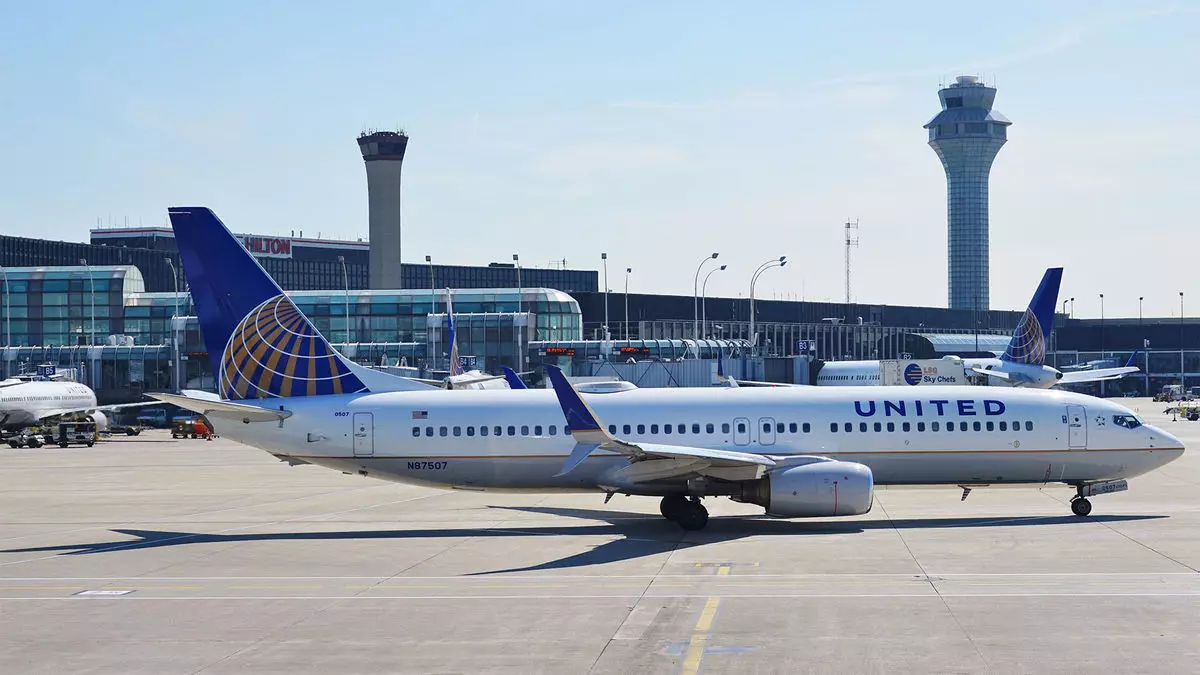The ongoing legal dispute between American Airlines, the city of Chicago, and United Airlines is not merely a courtroom drama but a pivotal battle that could redefine the competitive dynamics at one of the nation’s busiest airports, Chicago O’Hare. Both airlines have established strong operational presences at O’Hare, but recent developments threaten to alter the balance of power, particularly with regards to scarce gate access. This article delves into the ramifications of this showdown and the potentially far-reaching consequences for each carrier and the airport’s future.
Understanding the Stakes: Gate Allocation and What’s at Risk
At the heart of this battle lies the contentious issue of gate space, which is crucial for operational efficiency and service offerings. United Airlines currently commands 90 gates at O’Hare, while American Airlines utilizes 71. Proposed changes by the city could see a redistribution of this gate space, with United gaining five additional gates, placing them in a more advantageous position. Such an outcome would complicate American’s operations, making it increasingly difficult for the airline to compete effectively.
The manner in which gate access is redistributed is based on historical usage metrics; hence, United’s swift recovery from the pandemic has substantially skewed the numbers in their favor. In the wake of the pandemic, United has demonstrated a remarkable rebound, launching new routes and increasing its overall seat count, which indirectly lends them leverage in negotiations over gate access.
The Ground Realities: Data in Play
According to data from Cirium, United’s rebound outperformed that of American, with the former operating nearly all its pre-pandemic flights by 2024, while American lagged significantly behind. This stark contrast in recovery strength isn’t lost on industry analysts like Brett Snyder, who suggest that a gain of even a few gates could create a cascading effect that entrenches United’s market position further.
In a competitive environment marked by limited resources, the implications of such shifts can be calculated in real economic terms—yield per passenger mile flown. United reported a 13% advantage over American in yield during late 2024, providing clear evidence that the stronger operational base translates into better financial performance. Such metrics do not just paint a picture of competition; they forecast the growing risk American faces as it struggles to regain lost ground.
The Legal Mechanism: Timing That Matters
American Airlines’ lawsuit hinges on the timing of the gate redetermination process. They argue that the city initiated the analysis too early, violating the 2018 lease agreement terms that they negotiated to facilitate the construction of common-use gates. The heart of their grievance rests on a commitment from the city to allow 12 months for American to ramp up gate usage after the last of the newly operational gates before any assessment could take place.
This seemingly technicality in legal terms could have significant operational implications. Essentially, American believes they deserve a larger allocation based on their grow-in plans and the subsequent usage metrics that would follow the access to new gates. If American’s trajectory continues on the upswing, there is a legitimate argument to be made for their cause—one that could significantly alter the operational landscape at O’Hare.
The Competitive Battle: Tactics and Future Moves
While American Airlines may be facing challenges, the situation is not wholly devoid of hope for them. Should United attain a larger gate share, American could opt to systematically challenge United’s dominance by aggressively increasing their seat offerings as a form of counter-strategy. However, that comes with its own set of risks and costs. As Snyder points out, even if American chooses to retaliate, the potential return on such an investment may not outweigh the inherent risks, leading to tough strategic decisions moving forward.
This high-stakes competition between two airline titans at such a critical hub invites thoughts on the nature of competition itself, especially in a post-pandemic travel landscape. Will airlines prioritize growth in major hubs at the expense of sustainable operations? The unfolding drama at O’Hare could very well serve as a blueprint—or a cautionary tale—for the industry at large, placing a spotlight on how carriers adapt to an ever-evolving environment.
Implications for Passengers and the Industry
As this contentious issue plays out in the courts, the consequences extend beyond the airlines themselves. Passengers are at the mercy of the strategic decisions made by these carriers, which can impact the options available to them in terms of routes, pricing, and overall service quality. Both airlines will undoubtedly strive to enhance customer experience in order to solidify loyalty, exacerbating the importance of how gate assignments and service availability can create a more favorable experience for travelers.
The fate of American Airlines, United Airlines, and the future of Chicago O’Hare is still uncertain. Yet, one thing is clear: the competition brewing on the tarmac may redefine how airlines operate in one of the most critical hubs in the country, and stakeholders from all levels—airlines, governments, and passengers—will feel the ripple effects of this significant game of chess.

